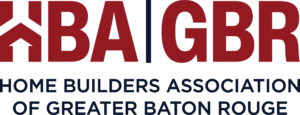Homes today are complex – they involve systems within systems, integrated technologies, and dozens of “pieces” or components that homeowners rely on every day. Each home component – including systems, appliances, finishes, and more – has its own make, model, serial number, user manual, warranty information, and more.
A homeowners’ manual is the key to maintaining and understanding all of these components. It is a compilation of information to help homeowners quickly and easily find the information to operate and maintain their homes properly. With green homes this is particularly important as the efficiency and effectiveness of all the various elements that make the home “green” are very interrelated and cannot be overlooked. Homeowner education and documentation via a homeowners’ manual is a requirement of home certification to the National Green Building Standard™ (NGBS), but beyond that, it’s just good business!
Responses from NAHB and Guild Quality’s recent survey, “Homeowner’s Perspective: The Value of a Green Home,” illustrated that homeowners would like more education from their builders. Owners of Green Certified homes specifically requested education to “understand how to operate and maximize the benefits of the green-related features in their home.” Taking adequate, timely care of a home is extremely beneficial in the long run and a homeowners’ manual helps homeowners – your clients – protect their most significant and important investment.
What Should a Homeowner Manual Include?
A homeowners’ manual is an easy way to guide your clients to useful product information, common maintenance solutions, and homeowner education. It should also provide general green living tips, resources, and additional information.
The NGBS includes Homeowner Education/Maintenance elements as a way to ensure that homeowners are able to maintain and enjoy the long-term benefits from their homes’ green features. For a home to be NGBS Green Certified, the homeowners/maintenance manual must include all the mandatory items and obtain enough optional points to meet the Chapter 10 point threshold.
Where to Start: Inventory Home Components
A good starting point for your homeowners’ manual is the inventory of all of the major components and systems of the home. Each appliance or feature comes with a copious amount of information: a manual (or two); identifying numbers for the product; warranty information; and information on how to properly care for each component.
Ideally, this type of information should all be well organized and easily accessible. Logical ways to organize it may be by room or by system type. A simple spreadsheet, table, or list which references the item and physical location within the home, brand/manufacturer name, model name and number, and serial number is the most basic format.
Examples of home components to include are:
- HVAC filters
- thermostat operation and programming
- lighting controls
- appliances and settings
- water heater settings
- fan controls
Targeted Resources
Provide the homeowner advice, guidance, and resources for home care and research. This may include tips on how to save money on repairs, utilities, and replacements and help to reduce the total cost of homeownership. The key in this section is to make the information practical, easy to find and use.
Home-Related Resources
Homeowners often need references or other resources to conduct their own maintenance and improvements within the home. They can look to their neighbors, friends, or colleagues for these things, or they can rely on information you’ve provided them – and brag about how helpful their builder is to their neighbors, friends, and colleagues! These resources may include a diagram of the safety valves and controls in the home, local service providers for maintenance and service, frost-protected shallow foundation maintenance (where applicable), and photo records of the home’s framing with utilities. Be sure to include your/your business’s contact information in this information.
Guide to Maintenance Solutions
A narrative explaining the importance of maintenance and operation in retaining the attributes of a green-built building is the starting point for maintenance information. Maintenance checklists provide a baseline for homeowners on when to perform various maintenance tasks, as well as provide a guideline for what tasks are DIY versus those that may require calling a professional. Checklists may be organized as seasonal or annual, and you can either us a publicly available template or one you create. Your company may have a maintenance handbook that would be appropriate to include in this section of the manual as well. Other information you want to include: humidity maintenance how to’s; instructions for inspecting the building for termite infestation; maintenance of rainwater diverting systems (gutters and downspouts); and stormwater management.
Green Options & Landscaping
The exterior of homes and the landscaping around them often provide many opportunities for “greening up” practices and products. Options include understanding common hazardous materials used around the home and instructions for proper handling and disposal; information on organic pest control, fertilizers, deicers, and cleaning products; and information on native and/or low-water landscape materials.
Assembly, Presentation & Education
The intent of a homeowners’ manual is to deliver useful and timely information to homeowners – that’s a constant. How this information is delivered is more variable. Information may be delivered in a hard-copy printed version or in some digital/online format. Either way, the information should be organized and categorized for quick and easy access.
Homeowner education is typically conducted upon the walk-through of the house and can be easily reinforced with use of a homeowners’ manual. Good education and a comprehensive homeowners’ manual may even reduce call-backs, especially concerning the most common homeowner questions and concerns. Remember, homeowner education is an invaluable opportunity for you to showcase the quality of the green or high-performance home you have built, and your level of customer service.
You may wish to provide education and training on additional items as well. Your homeowners’ manual will offer your clients a lasting reminder of the care with which you built and presented their home.




















